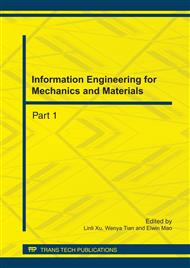p.128
p.133
p.137
p.143
p.148
p.153
p.158
p.163
p.168
Acoustic Emission Behavior during Fatigue Crack of API5LX70 Gas Pipeline Steel
Abstract:
This paper present Acoustic Emission (AE) generated during fatigue mechanism of API5LX70 steel which was widely use as gas pipeline materials. Fully reverse (R=-1) constant amplitude fatigue test were done with four different stress amplitudes which were 437.5MPa, 406.25Mpa, 390.6MPa and 359.4MPa respectively. An observation from those tests shows that AE Count gives a significant value during cyclic softening and bauschinger effect. Crack initiation indicated by rapid increase of AE count values at positive peak stress and followed by high AE count values around zero stress which indicate crack closure phenomena. Among all four tests, it was show that AE activity from fatigue test with amplitude of 359.4MPa can be significantly divided into 3 region which correspond to crack incubation stage, microplastic and slip plane formation stage and crack initiation and propagation stage. Further analysis was done by separating AE signals from those 3 regions into 6 different groups. Ten AE signatures from each group were selected to calculate AE RMS and AE kurtosis. Analyses on AE RMS which correspond to overall energy of the signal were useful to indicate the microplastic and slip plane formation stage and crack initiation and propagation stage while AE kurtosis was useful in indicating crack stage including initiation, propagation and closure stage.
Info:
Periodical:
Pages:
148-152
Citation:
Online since:
July 2011
Authors:
Price:
Сopyright:
© 2011 Trans Tech Publications Ltd. All Rights Reserved
Share:
Citation:


